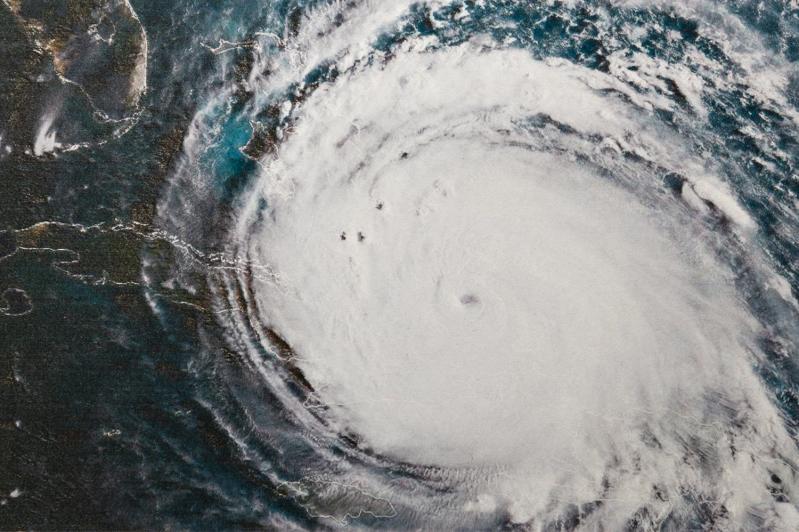Forecasters at the National Oceanic and Atmospheric Administration’s Climate Prediction Center predict an above-normal Atlantic hurricane season, which started yesterday and extends through November.
Should the prediction prove true, the 2022 hurricane season will be the seventh consecutive year of above-average hurricane activity.
The Climate Prediction Center, a division of the National Weather Service, forecasts a 65-percent chance of an above-normal season, a 25-percent chance of a near-normal season, and a 10-percent chance of a below-normal season.
NOAA is forecasting a likely range of 14 to 21 named storms, which are characterized by winds of 39 miles per hour or higher. Of these, six to 10 could become hurricanes (winds of 74 m.p.h. or higher), including three to six major hurricanes, which would be designated Category 3, 4, or 5 and feature winds of 111 m.p.h. or higher. NOAA issues these ranges with 70-percent confidence in accuracy.
The agency attributes the increased activity anticipated this year to climate factors including the ongoing La Niña that is likely to persist throughout the hurricane season, warmer-than-average sea surface temperatures in the Atlantic Ocean and Caribbean Sea, weaker tropical Atlantic trade winds, and an enhanced West African monsoon. The latter can lead to summertime conditions across Northern Africa that seed many of the strongest and longest-lived hurricanes westward over the Atlantic.
La Niña is an oceanic and atmospheric phenomenon that is part of the El Niño,-Southern Oscillation climate pattern. It persists for at least five months and has extensive effects on weather around the world, including the Atlantic and Pacific hurricane seasons.
In East Hampton Town, hurricane season arrives on the heels of the issuance of a draft of the town’s Coastal Assessment and Resiliency Plan that emphasizes the town’s vulnerability to coastal flooding and shoreline erosion. Among its bleak conclusions are that during the next 30 years, the chance of a flood with a magnitude similar to that of the 1938 Hurricane, at least once, is about 60 percent. The currently projected range of sea level rise “will transform East Hampton into a series of islands with permanent submergence of low-lying areas as early as 2070” absent action to mitigate climate change, it states.
While hurricanes generally do not reach this region before August, “it certainly could occur at any time,” Supervisor Peter Van Scoyoc said on Tuesday. “Weather is much more fickle and unpredictable,” he said, echoing climate scientists who warn that climate change is causing an increase in both the frequency and intensity of extreme weather.
The town has protocols in place, he said, referring to “a series of events that take place” to prepare in advance of extreme weather. The town has an emergency preparedness task force, and Bruce Bates, the emergency preparedness coordinator, works with departments including the Fire Department, the Police Department, and Buildings and Grounds, the latter responsible for post-storm cleanup. “It’s all hands on deck in preparation for a hurricane,” Mr. Van Scoyoc said.
Certain low-lying areas may face mandatory evacuation based on predictions of a storm’s severity and tidal surge, the supervisor said. “We take the potential threat very seriously, and our citizens and visitors should as well. We like to remind them of what to do in preparation so you don’t get caught short.” This includes a stockpile of drinking water, batteries, and a means to charge cellphones in order to receive information and updates.
Residents and visitors “need to be ready to put away all those type of things you might have on your lawn — furniture, umbrellas — and be prepared to board up windows. There are a lot of different things individuals can be prepared to do. Be prepared to be without power for a couple of weeks — maybe longer if we got a catastrophic hurricane, which at this latitude is not as common but certainly can happen.”
Sea levels have risen about one foot over the last 100 years, and the future rates of sea level rise are projected to be much greater, between eight and 30 inches over the next 30 years, according to the coastal resiliency draft plan.
“Obviously, storm surge is going to be an increased issue,” Kevin McAllister, an expert on coastal zone management and founder of the advocacy group Defend H2O, said of above-average hurricane activity. While Hurricane Henri had a minor impact on the town when it struck last August, had it been “a couple of clicks to the west, it would have been an entirely different story,” he said. “We got the backside. Had we gotten the funnel side of that, storm surge would have been significant. We dodged a bullet there, but the sheer number of storms projected, and their strength, remains to be seen. But it’s very serious stuff.”
NOAA’s prediction for hurricanes this year further underscores the need to plan a managed retreat in downtown Montauk, per the coastal plan’s draft recommendations, Mr. McAllister said. “I believe the front-row structures there,” he said of the resorts on South Emerson Avenue, “we’ve really got to do what we can to get them out of there. That is the reality of it. If they’re relocated, that’s wonderful, and then to, in turn, build a very formidable dune system there. It is the best approach to try to protect downtown Montauk, and manage and respond to storm events, where you can build dunes from behind without the encumbrance of buildings.”
In the wake of Superstorm Sandy in October 2012, the federal Army Corps of Engineers installed a 3,100-foot-long line of sand-filled geotextile bags and tubes along the downtown ocean beach in 2015, and the town and Suffolk County are jointly responsible for annual sand replenishment there. But “we’re not going to keep pace with sand replenishment, I believe,” Mr. McAllister said, “and interaction of that sea wall with the forces that are coming is going to narrow that beach down. Something’s got to give.”
Mr. Van Scoyoc said that the Montauk portion of the Fire Island to Montauk Point reformulation project, known as FIMP and spanning 83 miles of shoreline between Fire Island Inlet and Montauk Point, could happen as early as late summer or autumn, though the Army Corps has previously stated that the town would not see the project’s implementation until 2023. The multibillion-dollar project comprises dredging and shoreline projects including a variety of coastal and wetlands restoration aimed at reducing flooding, erosion, and storm damage, while preserving the natural environment and wildlife habitat. It also promotes coastal management initiatives for the bay side of barrier beaches.
FIMP, Mr. Van Scoyoc said, “is an intermediate solution to hopefully give us little more breathing room until we can really implement our adaptation to coastal threats and sea level rise — a changing shoreline.”
Rick Spinrad, the NOAA administrator, said in a May 24 statement issued by the agency, “As we reflect on another potentially busy hurricane season, past storms — such as Superstorm Sandy, which devastated the New York metro area 10 years ago — remind us that the impact of one storm can be felt for years. Since Sandy, NOAA’s forecasting accuracy has continued to improve, allowing us to better predict the impacts of major hurricanes to lives and livelihoods.”
The Climate Prediction Center will update the 2022 Atlantic seasonal outlook in early August, just ahead of the traditional peak of the season.




